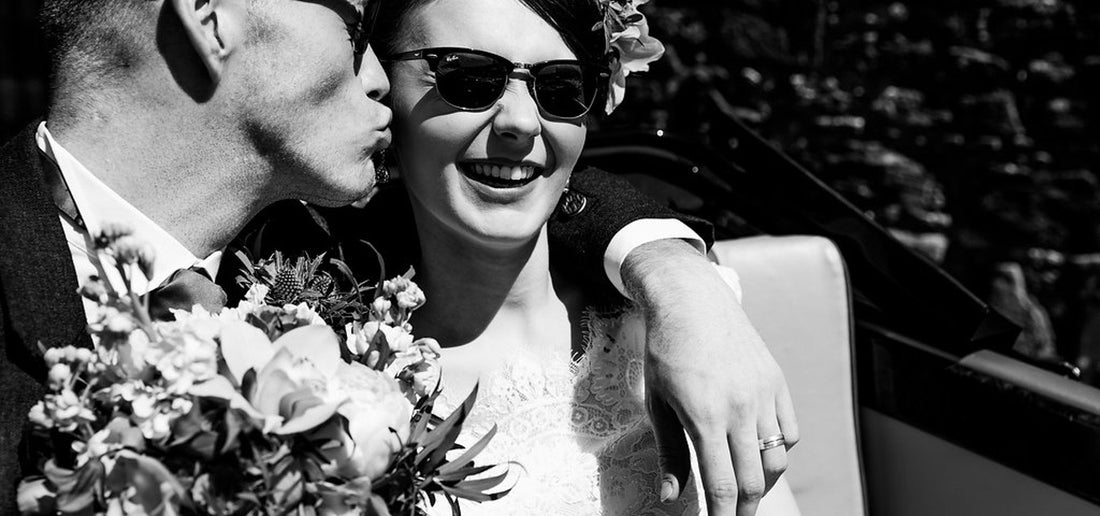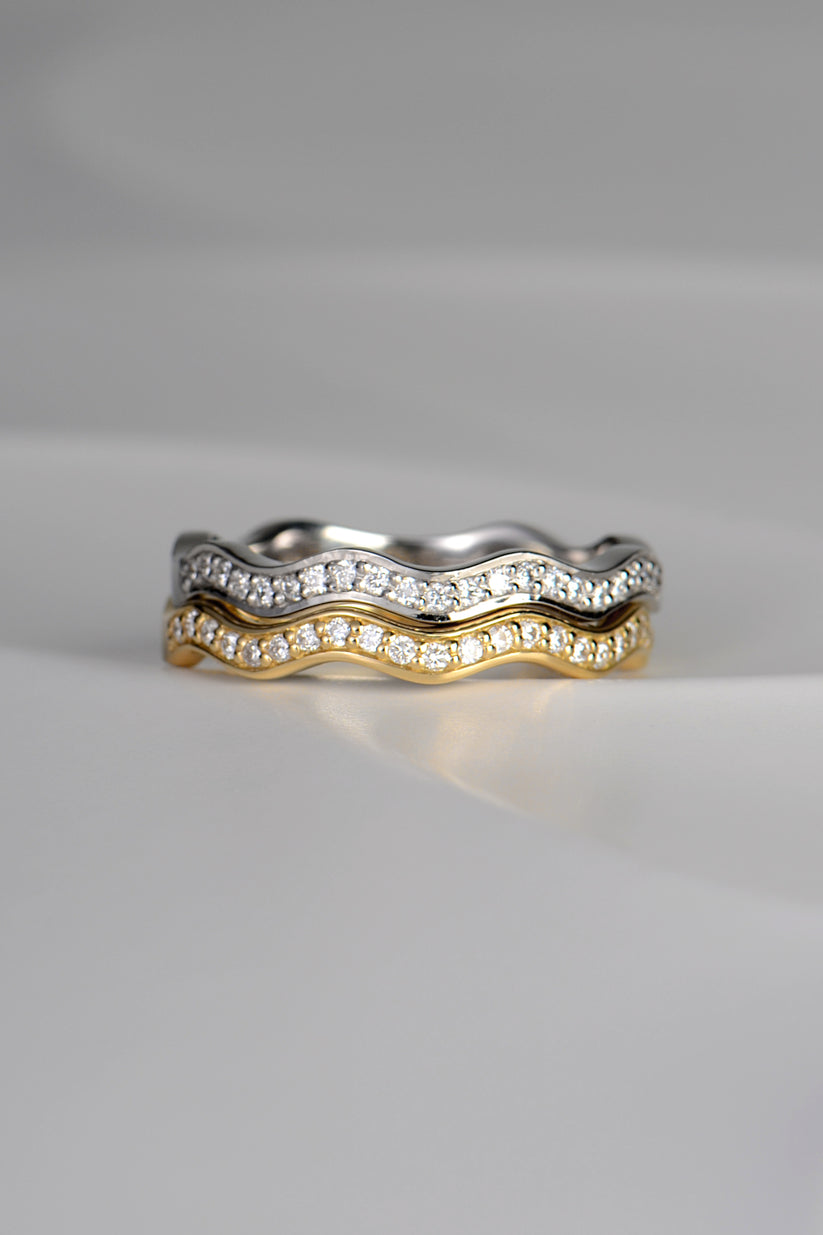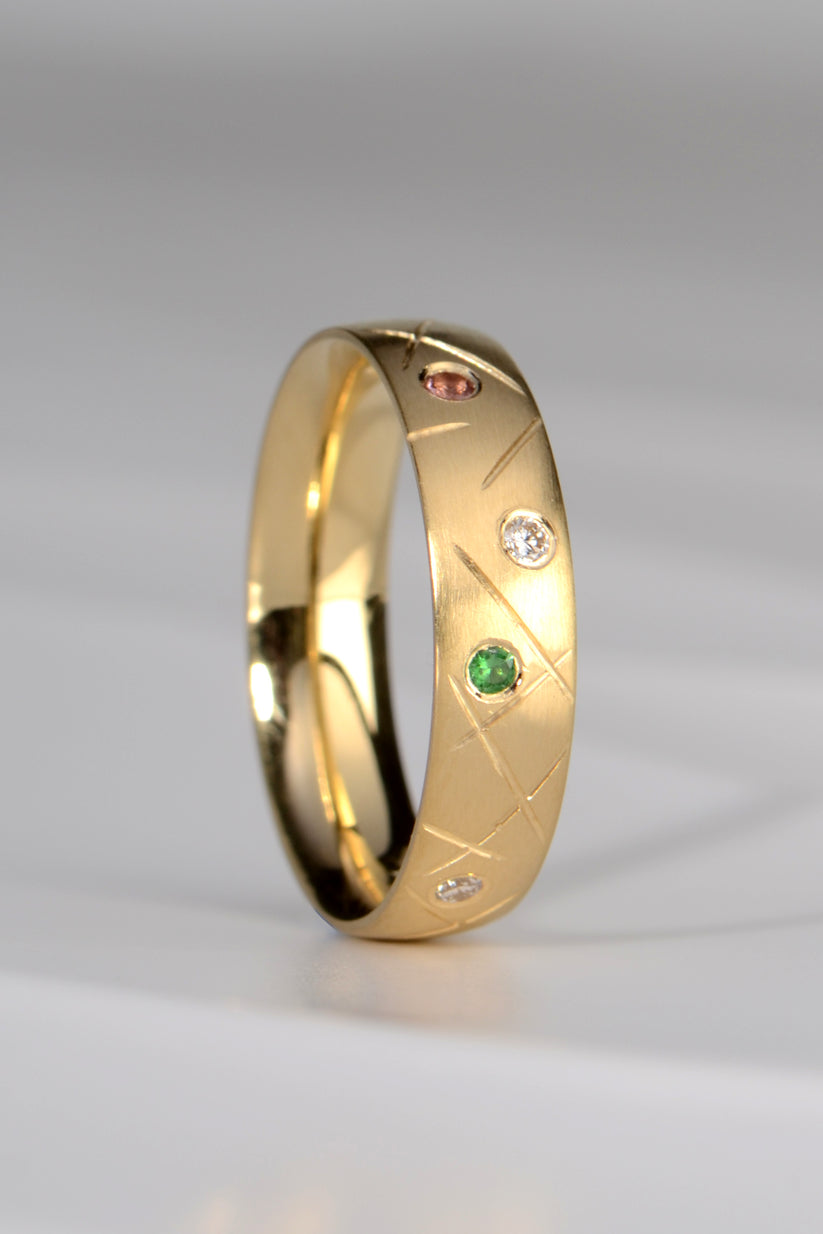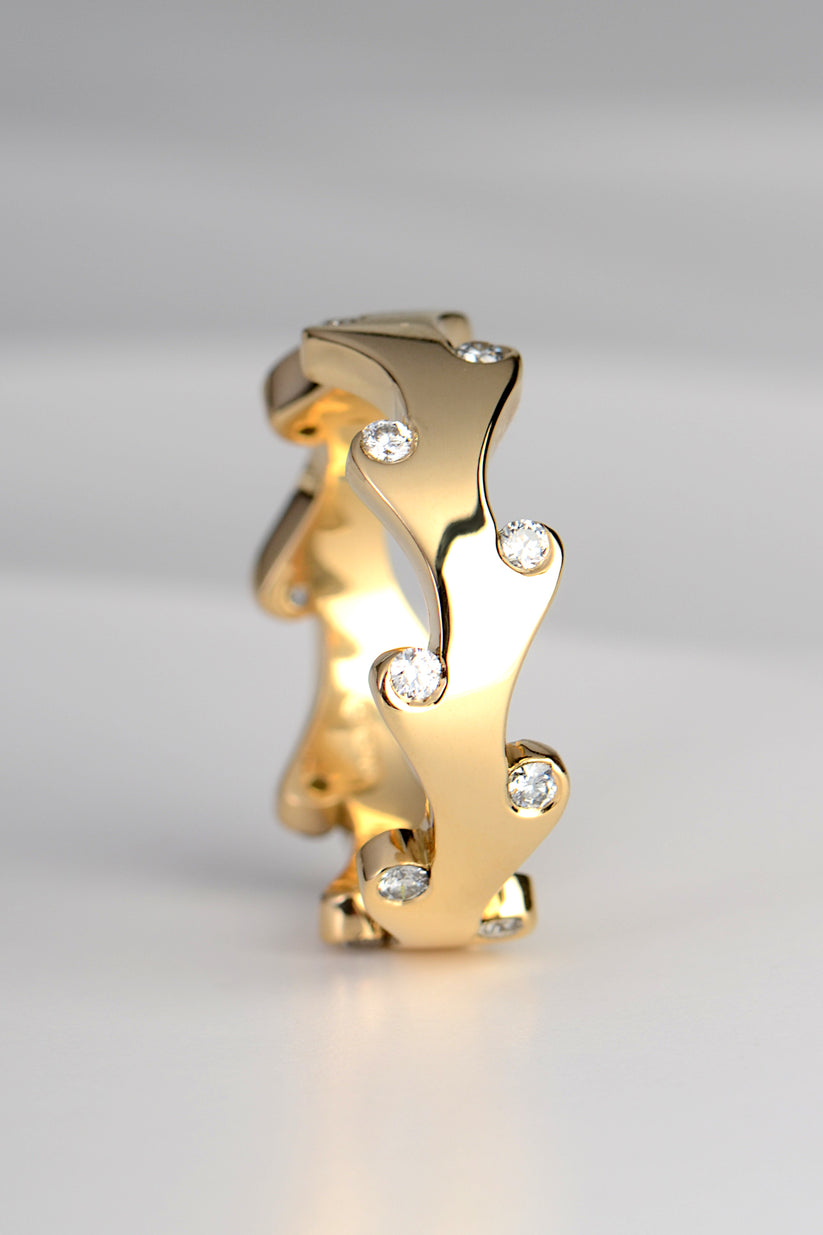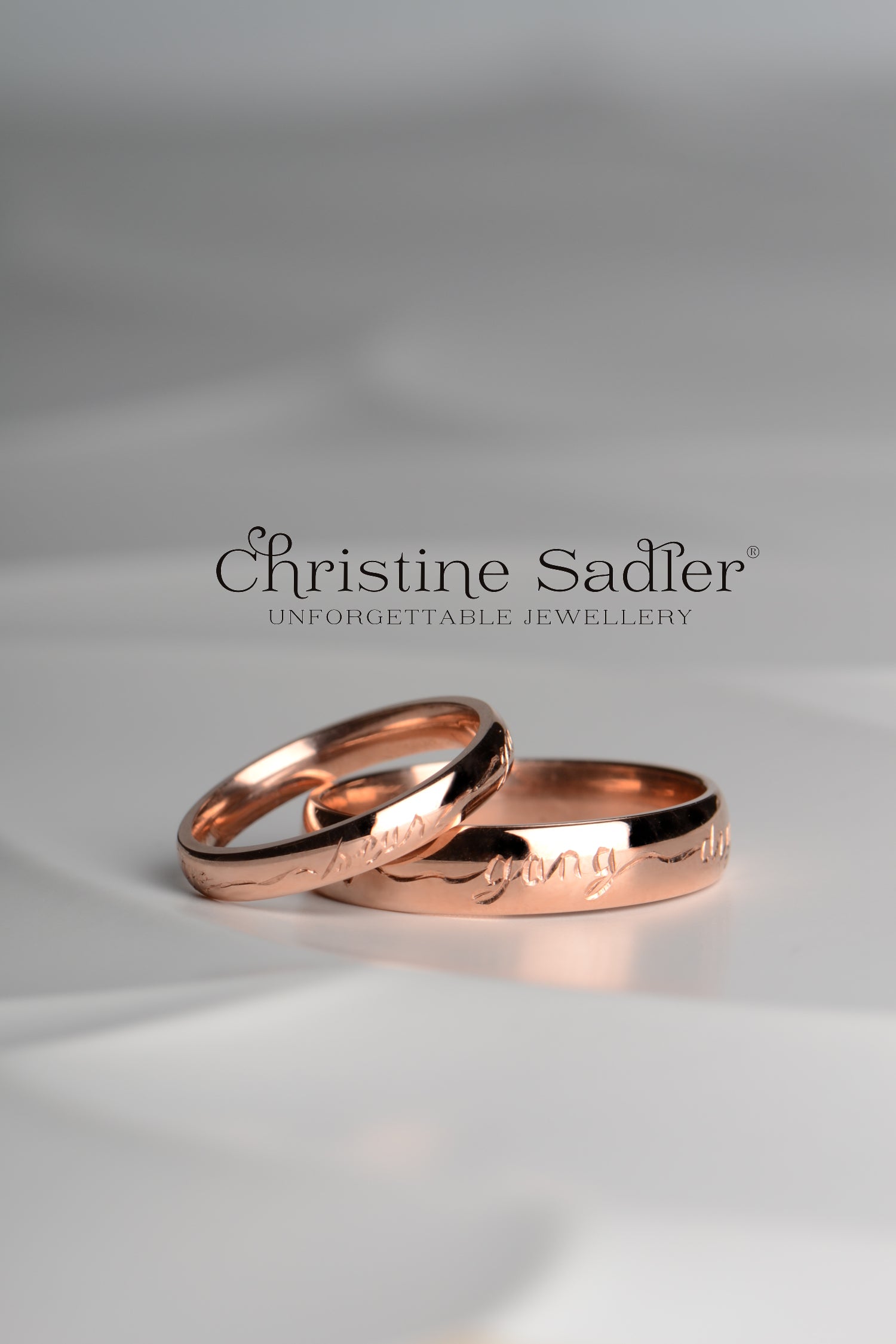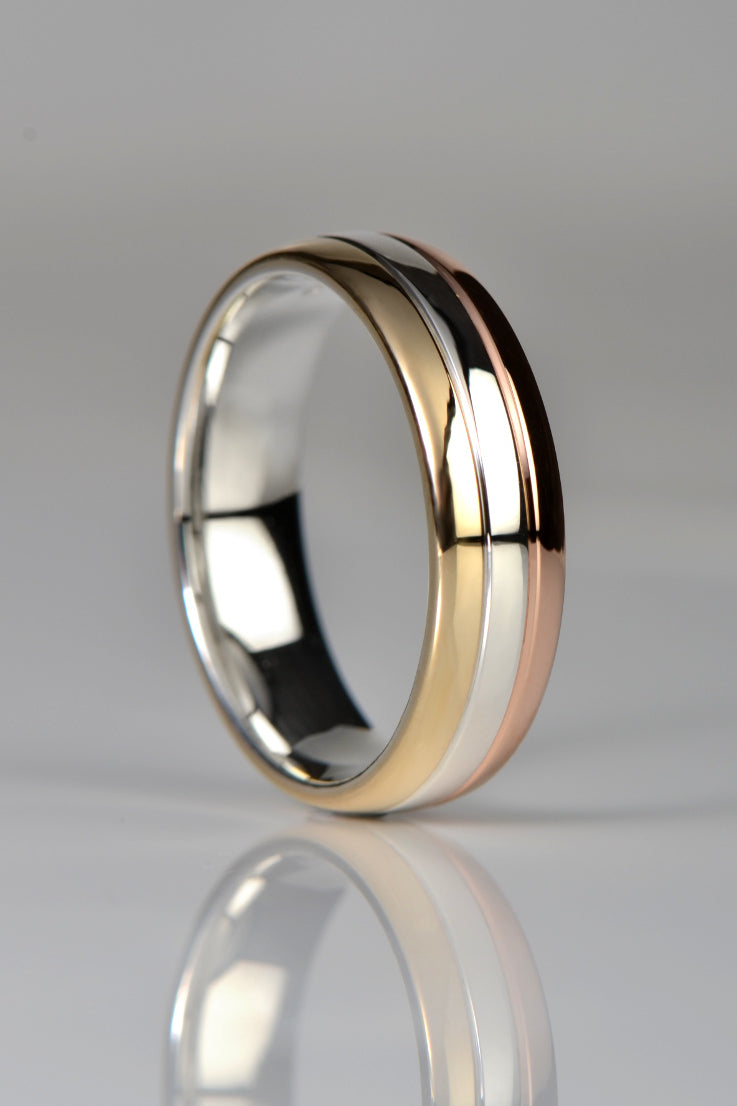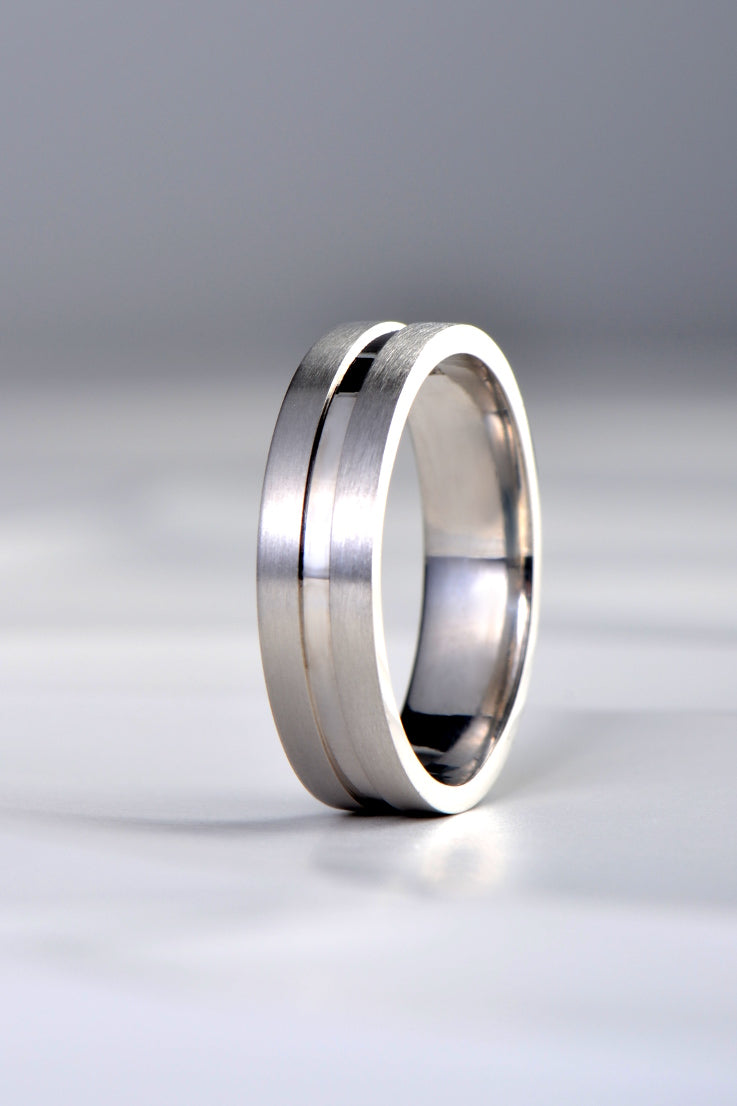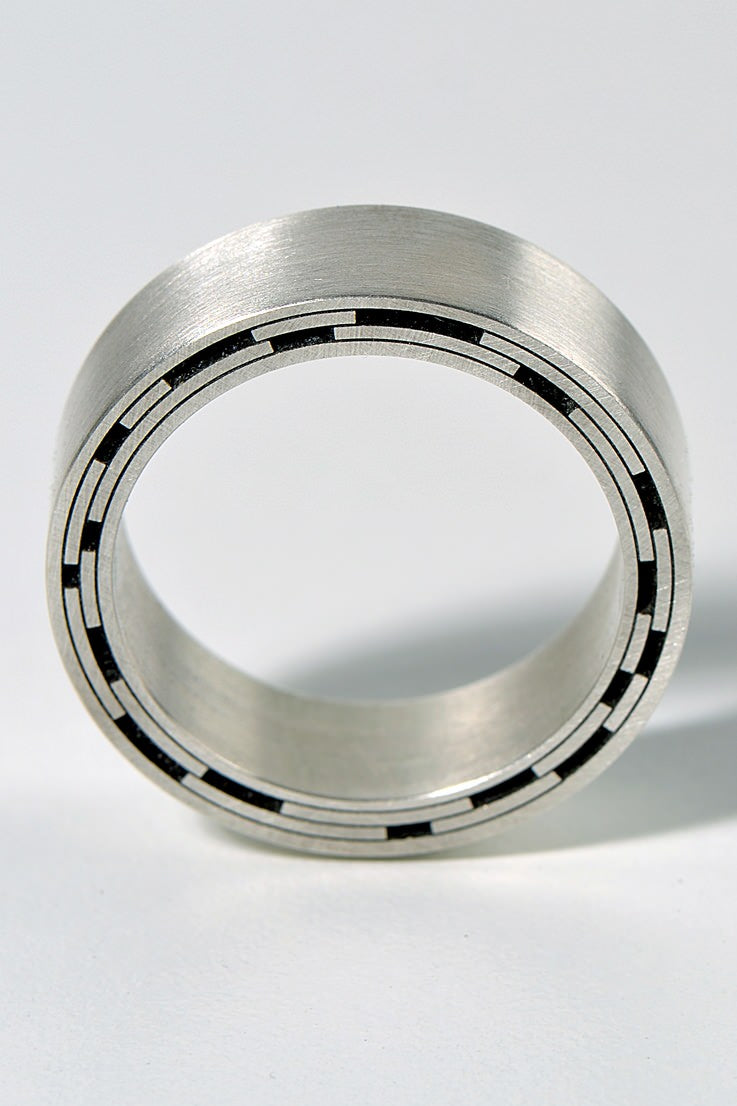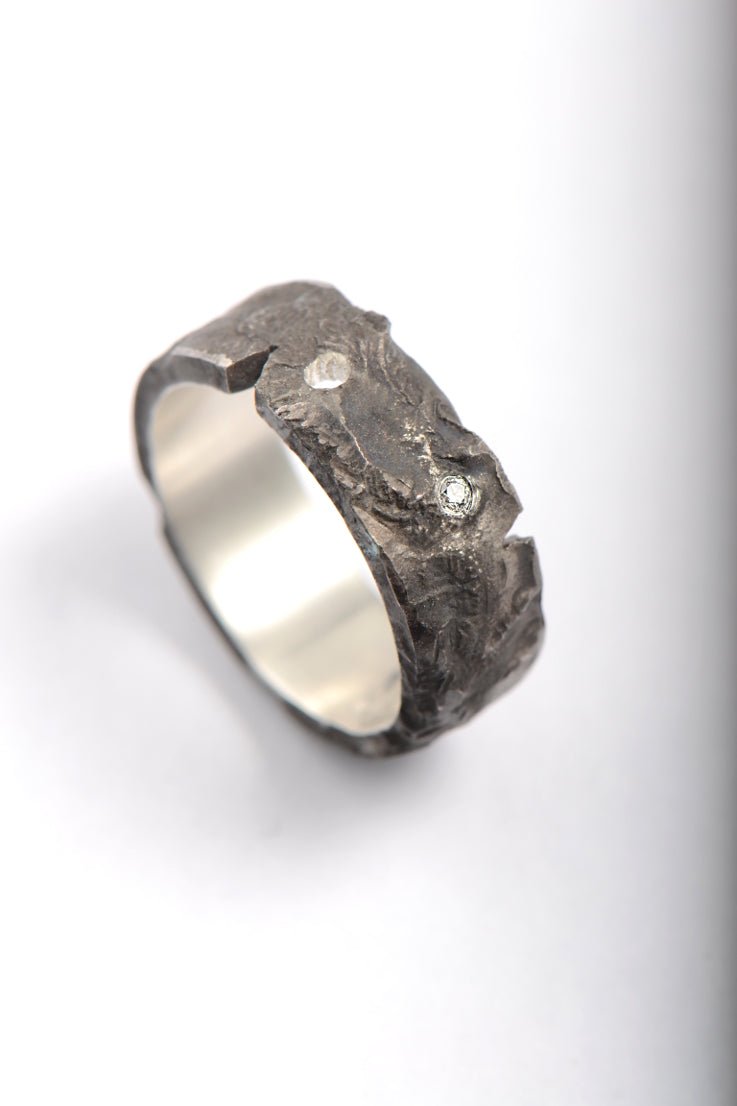When you are shopping for wedding rings, you will be given the option of having your ring made from different metals. Why should you choose one over the other? Which option offers the best value? What's the difference between different carats of gold? I'll answer all these questions and more.
If you are looking for a high quality wedding ring, you will choose a precious metal. Why? Because precious metals are strong, long lasting and able to be altered in size. Why would your wedding ring need to be changed in size? I hate to be the one to break this to you but you won't stay this size forever. Weight gain or weight loss as well as conditions such as high blood pressure and arthritis can change your finger size. Wedding rings made of engineering metals, such as titanium and tungsten are popular at the moment because they are unusual and cheap but while they are a cool alternative to a precious metal as a dress ring, they aren't suitable for a ring you will wear for life. Tungsten and titanium wedding rings, unlike gold, platinum, silver or palladium, cannot be resized so when you find that your wedding ring no longer fits you, it will lie in a drawer unworn. Even more concerning is that rings made out of engineering metals like tungsten cannot be cut off in an emergency using traditional tools due to how hard and brittle they are. Why would you need to have your wedding ring cut off? If you wear a ring everyday and never take it off, it stays thinner where the ring is and gradually, the rest of the finger gets larger. If you don't notice this, at some point, the ring will start to feel uncomfortable and you won't be able to remove it. That's why jewellers and A&E departments have tools for cutting off precious metal rings. So if you love the idea of an unusual metal, get it as a dress ring, not your wedding ring.
What makes the precious metals so special? Gold and silver have been used for millennia to create jewellery. Both of these metals are able to be formed into a variety of shapes due to their malleability and ductility and can be polished to a beautiful shine.
Polished silver reflects 95% of the visible light spectrum, which makes it the most reflective metal. Because of that, many mirrors are coated with it. Its reflective properties are also used for objects like telescopes, microscopes and solar panels.
Gold is the only metal that is yellow. The warmth of its reflective colour imparts the feel good factor of the sun and the latin name for gold, aurum, means "shining dawn"or "glow of sunrise". Gold even has an official body to look after its interests. The World Gold Council has launched its first immersive documentary series showcasing gold’s impact on humanity’s past, present and future. A five-episode series explores the metal’s history, cultural relevance and technological uses. Featuring experts and stories from around the world, exploring gold’s world-changing impact as an engineering super-material, biological instrument, symbolic creative medium and economic pillar. It is presented by Hannah Fry, a professor in the Mathematics of Cities, best-selling author and award-winning TV host. Filmed across the globe, the series features experts including clean-tech pioneer Phil de Luna; Tawny Chatmon, an artist who works with gold leaf; and with a former F1 championship-winning mechanic. You will find this series in my Jewellery Academy section of this website.
In addition to gold and silver, platinum and palladium complete the four precious metals that have a hallmark.
Platinum was first used in jewellery around 1870. Before this time, jewellers did not have the capability to melt the metal because it requires extremely high temperatures. Initially, there was no demand for platinum jewellery until Cartier developed a secret platinum alloy and showcased it in their luxury jewellery in its iconic garland style. Platinum is loved by diamond setters because platinum’s strength holds stones securely even in very fine, delicate settings. This allows designers to create pieces with thinner shanks, and stones set closer together with smaller almost invisibly set prongs, perfect for highlighting diamonds. Platinum makes setting diamonds easier and faster. The stronger prongs, pushed down once, stayed securely in place.
Palladium is the new kid on the block, only gaining its precious metal hallmark in 2009. Palladium was introduced as a more cost effective alternative to platinum for men's wedding ring and demand soared. Palladium is lighter than platinum so the same ring will weigh twice as much in platinum than it does in palladium, and as precious metals are priced in weight this has a significant impact on the cost. However, both platinum and palladium are used in industry and this can have huge impact on the price. While palladium used to be an inexpensive alternative to platinum, the price of platinum has fallen and the price of palladium has soared. This, strangely, has been in part due to the decommissioning of diesel cars. Diesel cars use platinum in their catalytic converters and petrol cars use palladium. This change in the value of these metals has resulted in palladium costing more now, even though it is lighter, than platinum.
So let's get into the benefits of each metal as a wedding ring.
Gold is the most varied option because it comes in different colours and different carats. Gold is split into 24 carats in terms of its purity. If gold is not mixed with any other metals it is classed as 24 carat. In the UK, this is shown as 24ct and in the rest of the world it is normally written as 24k.
Gold comes in 9ct, 14ct, 18ct, 22ct and 24ct. 9ct is nine parts gold and fifteen parts other metals. 14ct is fourteen parts gold and ten parts other metals. 18ct is eighteen parts gold and 6 parts other metals and 22ct is twenty two parts gold and two parts other metals.
Why do they offer gold in differing standards? Gold is a relatively soft metal in its pure state. It is easily bent and easily dented. By alloying gold with other metals, it can be made stronger and more scratch resistent. It can also make it more affordable. Alloying metals is a science carried out by metallurgists. The exact combination of different metals in alloys is kept secret because it takes great skill and technical ability to ensure the correct balance will allow the metal to be able to be poured at high temperatures without faults, to be ductile to be drawn down into wire or sheet and to not be brittle. While the metals used are kept secret, the amount of gold in every item over 1 gram is independently tested by the Assay Office, which is a body set up to protect consumers. They add a hallmark to every item to show it has been tested and contains the correct amount of gold for the carat.
Alloying metals also allows metallurgists to change the colour of gold. Gold comes in white and rose as well as yellow. Copper is added to rose gold to make it red while silver and palladium are added to make it white.
If you would like a yellow gold wedding ring, 9ct yellow gold will be more affordable, about half the price of an 18ct gold ring. It will be slightly less yellow than 18ct gold and will be slightly lighter in weight. 9ct gold used to be more hard wearing than 18ct gold but as modern alloys have improved both metals are a great option to wear everyday, forever. 14ct is often used in Europe and America instead of 9ct. It is between the price of 9ct and 18ct gold.
If you are thinking of going for rose gold, 9ct rose gold looks more red than 18ct because there is more copper in the 9ct version than in 18ct. 18ct rose gold can look yellow unless it has a different metal as a contrasting colour. If it is separated by a white metal between a band of yellow and rose gold, the colour difference can be seen easily because the white metal emphasises the different tones. We prefer the more intense colour of 9ct rose gold to 18ct, even though it costs less.
If you are thinking of white gold then hands down, 18ct white gold is better than 9ct white gold even factoring in the higher cost. 18ct white gold can come in a 14% or higher palladium alloy. This means that palladium is mixed with the gold to create a white metal. It also makes the gold very hard because palladium is a very hard metal. 9ct white gold is alloyed with a lot of silver which means it is very soft in comparison the 18ct and it has a warm white colour rather than a cool gray shade. You really want to avoid all 18ct gold alloys that aren't high palladium alloys because they won't be very white, due to the high quantity of gold. Almost all white gold is plated with rhodium. Rhodium is an expensive metal from the platinum group of metals and it is used to give white gold a final bright pure white finish. As white gold is worn, it becomes scratched and gradually, the rhodium plating get worn away. The ring will need repolished and re rhodiumed every year or two or as often as you feel you need it done. Some people leave it eight or more years before they feel they would like the ring restored to looking like new. With 18ct high palladium white gold, you won't notice much of a colour difference but with 9ct white gold you will see the change much quicker. Some jewellers sell white gold which is almost yellow underneath the rhodium plating which means as it wears, it will look very yellow. It is best to ask and ensure you buy a high palladium 18ct white gold alloy. Why do they alloy 9ct gold with silver instead of palladium? Because palladium is a very expensive metal and this would push the price of the 9ct ring up much higher than other 9ct gold alloys.
If you want a white metal that isn't plated then platinum or palladium or silver is your best choice. At the moment, it costs less to purchase a platinum wedding ring than a palladium ring and, as this is due to external market forces, it is exceptionally good value. There is a strong possibility that the cost of palladium could fall in future so that would be a better time to buy a palladium wedding ring. The only benefit to buying palladium over platinum is that platinum is a softer metal and dents more easily than palladium. Platinum develops which is called a "patina" over time which is a soft matt finish. This can be polished to restore it back to its new condition.
Silver is a great option for a wedding ring, especially if you want something more adventurous or heavy. Silver isn't plated and because it is a very affordable metal you can have very wide and unusual designs at a fraction of the cost of palladium or platinum. Some people think silver isn't suitable as a wedding ring but that's because they are comparing it to mass produced, light weight fashion jewellery. A well designed substantial wedding ring in silver will last a lifetime.
Silver will need cleaned more regularly than other metals because one of the unique properties of silver is that it oxidises. This means it turns black when it comes in contact with substances that react with the surface of the silver. A silver dip or silver cloth removes this tarnish leaving the ring looking like new and it is a simple and easy cleaning process that you can do at home rather than having to take it to a jeweller. This unique characteristic of silver can be exploited as a design feature which I have used in the Hero collection. The pieces in the Hero collection have been deliberately oxidised to create a unique look. Oxidisation can also be added to lines or engraving to highlight them.
So in summary, when shopping for your wedding ring, choose your preference for colour of metal, set your budget and that will help you to determine the best metal for you. If you still aren't sure and have anymore questions, just get in touch and we can help you make your selection.
Once you have chosen the precious metal you want, you can start to consider the design of the ring. I'll help guide you through the different ring widths, profiles and ways to personalise your wedding ring in my next blog.

